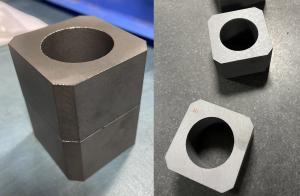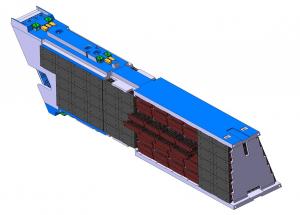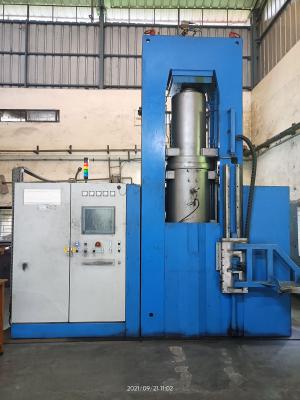Diagnostic shielding material qualified in India
Subsequent to the full validation of material production and machining feasibility, "Made in India" boron carbide (B4C) blocks are now qualified for use as radiation shielding material for India's plasma-facing diagnostic systems.
Indian industry has demonstrated that it can manufacture the boron carbide (B4C) blocks that will protect diagnostic equipment installed near the plasma.
B4C is an extremely hard, synthetically produced material whose chemical composition and vacuum and thermal properties make it an excellent choice for the neutron protection of equipment in the ITER diagnostic ports.
To validate the material production process and demonstrate manufacturing feasibility, the Indian Domestic Agency and its supplier M/s Bhukhanvala Industries developed full-scale samples of B4C blocks and tested them to rigorous ITER specifications.
Diagnostic port plugs: shielded "containers" for diagnostic systems
In order for ITER's plasma measurement diagnostics to be close enough to "see" deep within the plasma, yet far enough away to avoid the full brunt of heat and neutron radiation, they are integrated into port plugs. Twenty-five of these box-like structures, which seal off all vacuum vessel ports, host the diagnostic systems procured by seven Domestic Agencies. Working from a generic port plug structure, each Domestic Agency performs the integration engineering to adapt plugs under their responsibility to "embark," or host, a specific set of diagnostic equipment.
Shielding is particularly important on the plasma-facing end of the port plug. There, inside the drawer-like diagnostic shield modules that host front-end equipment, B4C in ceramic form is used to block or limit the neutron flux. Shaped into blocks of varying density and organized in modular assemblies around the diagnostic equipment, B4C represents a critical line of protection.
"With responsibility for the design, manufacturing, supply and commissioning of all diagnostic equipment integrated into upper port #9, the Indian Domestic Agency required a 'Made in India' source of B4C ceramics," says Hitesh Pandya, project manager at the Indian Domestic Agency. "The material will be also be used in shielding applications in other Indian-procured systems for ITER, so the successful development and qualification of B4C per ITER requirements was particularly important for us."
Qualifying Indian-made boron carbide blocks
Studies carried out to determine the optimal shielding material for diagnostic port plugs—with neutron-blocking capacity and machine weight limits as primary considerations—identified B4C as the best material.
The presence of boron isotopes makes it an excellent neutron blocker, characterized by a high neutron absorption cross section; it also can absorb neutrons without forming long-lived radio nuclides. Other properties—including low density (2.45-2.52 g/cm3), high melting point (~2445-2450 °C), high hardness (up to 9.75 on Mohs hardness scale), toughness, chemical stability, and thermal stability at elevated temperatures—contribute to its suitability for ITER's diagnostic shielding needs.
B4C is readily available in powder form in the Indian market; however, because of vacuum requirements at ITER, powder could not be used. Instead, the material has to be converted into dense blocks.
"The manufacturing challenge of obtaining the required density is very great," says Bhoomi Gajjar, scientific officer at ITER India. "The results from pressure-less sintering were not good enough, so we chose vacuum hot pressing. A high temperature (2050-2100 °C) and high pressure (~30MPa) hot press facility was developed for this purpose by the Bhabha Atomic Research Centre (BARC)—technology which can now serve other applications in the nuclear, defence and aerospace industries."
To validate the material production process and to check the manufacturing feasibility as per ITER requirements, full-size samples were produced and tested. The chemical composition of the samples, as well as their mechanical, thermal and physical properties, were studied and validated. The out-gassing rate of the final product—which multiplied by the B4C surface area gives the total B4C outgassing per port plug—was also determined to be within requirements during testing conducted at the vacuum calibration laboratory at the Institute for Plasma Research (IPR).
With the achievement of these important test and qualification steps, "Made in India" B4C material has been qualified for use as radiation shielding material in India's diagnostic port.




